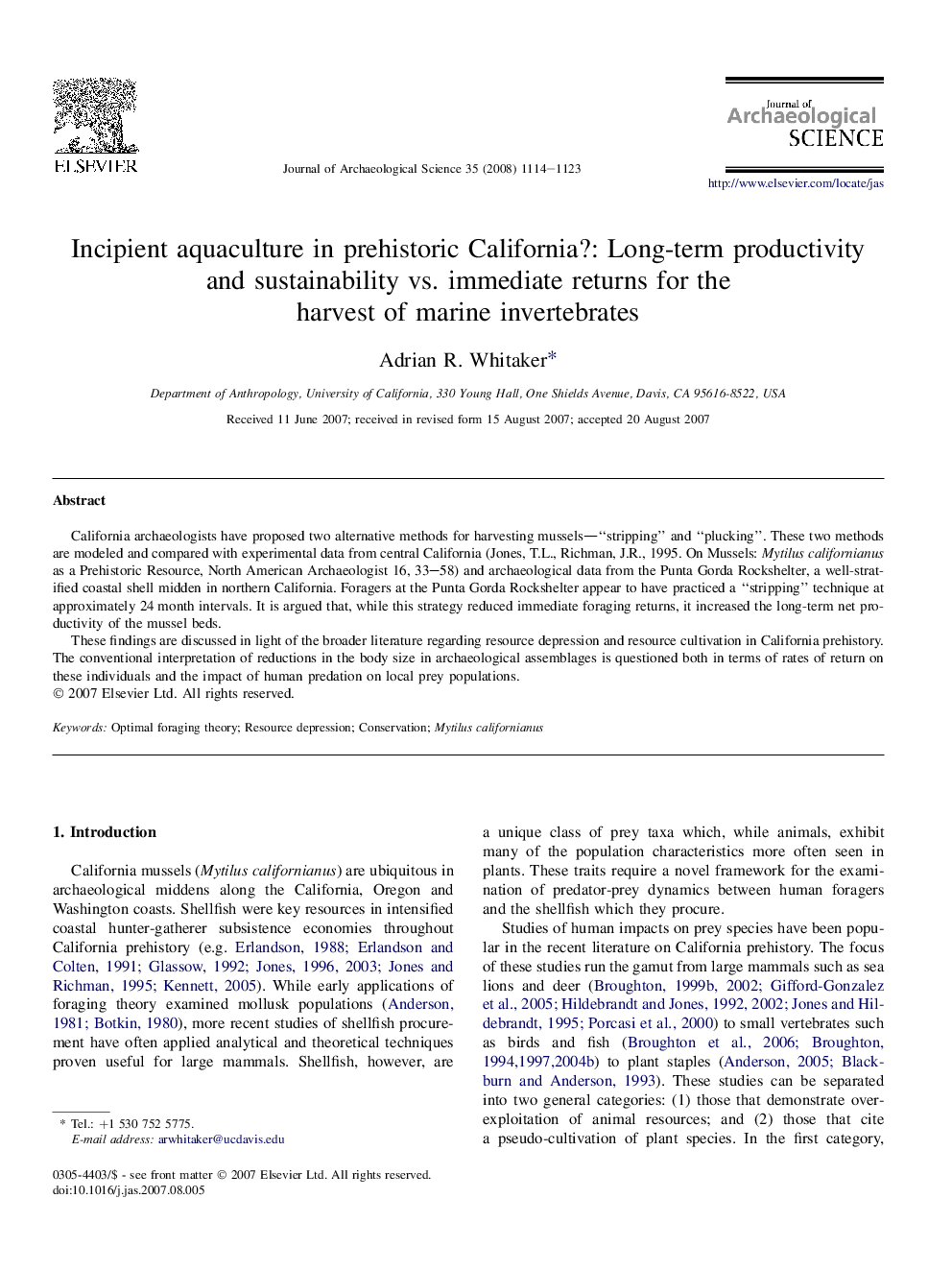| Article ID | Journal | Published Year | Pages | File Type |
|---|---|---|---|---|
| 1037467 | Journal of Archaeological Science | 2008 | 10 Pages |
California archaeologists have proposed two alternative methods for harvesting mussels—“stripping” and “plucking”. These two methods are modeled and compared with experimental data from central California (Jones, T.L., Richman, J.R., 1995. On Mussels: Mytilus californianus as a Prehistoric Resource, North American Archaeologist 16, 33–58) and archaeological data from the Punta Gorda Rockshelter, a well-stratified coastal shell midden in northern California. Foragers at the Punta Gorda Rockshelter appear to have practiced a “stripping” technique at approximately 24 month intervals. It is argued that, while this strategy reduced immediate foraging returns, it increased the long-term net productivity of the mussel beds.These findings are discussed in light of the broader literature regarding resource depression and resource cultivation in California prehistory. The conventional interpretation of reductions in the body size in archaeological assemblages is questioned both in terms of rates of return on these individuals and the impact of human predation on local prey populations.
